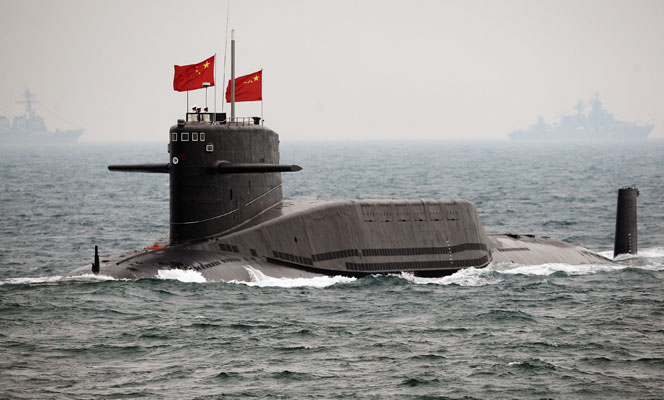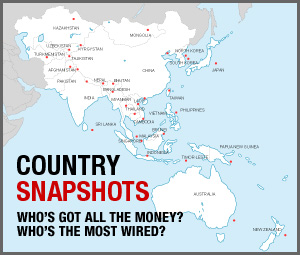The Next Arms Race

Yet this wave of submarine acquisitions raises some troubling questions about the future of maritime stability in Asia. The geometry of undersea rivalry was relatively simple during the Cold War. By 2020, in contrast, Asia will be home to well over one hundred modern diesel-electric submarines. At least ten navies–operating under a diverse set of strategic assumptions and threat perceptions–will jostle for geopolitical influence beneath the high seas. A new and more complex configuration of maritime power, unprecedented in Asian waters, will take shape as a result. The bodies of water bounded by the Japanese home islands to the north and the Philippine archipelago to the south will become an ever more competitive and challenging theatre. Whether the initial surge in submarine acquisitions currently on display will beget successive, more aggressive build-ups across maritime Asia remains to be seen, though the heavy spending on undersea warfare suggests that the action-reaction dynamic is already in place to impel a classic, regionwide arms race.
Asian navies are clearly determined to augment the precision and lethality of the firepower launched from their submarines. Virtually all of the subs are, or will, be outfitted with long-range land-attack and antiship cruise missiles. This lethal mix of weaponry suggests that many maritime services are contemplating not only traditional sea-control and sea-denial missions but strikes ashore. The prospect of stealthy submarines bringing war directly to one’s homeland, possibly without any early warning, is worrisome for governments throughout the region. Asia’s many coastal metropolises, the engines of global economic growth, could become especially lucrative targets for coercive military action. Equally troubling, pre-emptive attacks against military bases and naval vessels at anchor are now conceivable for weaker powers that lack the traditional tools for force projection.
Another key trend is the incorporation of air-independent propulsion systems on board the majority of the newer submarines. As a consequence, the interaction between submarine and antisubmarine warfare will likely become even more intense. One possible outcome may be greater exertions by well-financed navies to develop more (and more capable) ASW platforms. These fleets may well accelerate acquisitions of shore-based and carrier-based naval aviation units specializing in antisubmarine operations in the coming years. Indeed, the emerging submarine threat is driving Japan’s MSDF’s pleas for larger helicopter carriers designed for sub-hunting missions. Japanese carrier development could in turn stimulate a new cycle of rivalry among surface fleets intent on sea control. In other words, a submarine arms race could easily spill over into other dimensions of sea-power competition.
It’s worth noting, though, that no amount of gee-whiz hardware will translate into combat effectiveness absent the intangible, moral factors intrinsic to sea combat. The true value of a submarine fleet lies in such ‘software’ ingredients as doctrine, tactics, crew training and education, regular exercises, and active patrols. In joint exercises with the US Navy, the Singaporeans reportedly demonstrated extraordinary tactical virtuosity by exploiting the unique hydrographic features of the South China Sea. Singaporean submarines displayed an uncanny capacity to elude American antisubmarine units, proving once again that the age of the system matters less than the operator’s skill and knowledge of local maritime terrain. Whether newer entrants to the undersea race can duplicate Singapore’s experience will depend entirely on their willingness to invest in human capital.
Finally, regional navies will devote substantial energies to tracking the movement of one another’s submarines. Encounters among rival undersea fleets, then, will almost certainly become more frequent in the coming years. Incidents similar to the 2004 intrusion of a PLAN Han-class SSN into Japanese territorial waters may come to characterize Asian politics. Increased underwater contact will in turn heighten the prospect of mishaps or miscalculations that could escalate into unintended crises or full-blown shooting wars. Regional crisis management will, accordingly, assume greater urgency in Asian capitals. But with regional institutions and confidence-building measures still immature, it remains uncertain whether Asians can muster the collective political resolve to ensure crisis stability.
Two years ago, renowned historian Paul Kennedy documented a global maritime trend with possibly lasting strategic consequences. Kennedy observed that while Europeans more or less voluntarily retreated from the sea, Asians strode into the nautical arena with alacrity. He asserted that vastly divergent assumptions about power in general, and about sea power in particular, explain this historical anomaly.
As raw geopolitical calculations become passé in Europe, Asian capitals consider military power as relevant as ever to the exercise of statecraft and the nascent undersea rivalry engulfing the region conforms to such unsentimental attitudes about interstate relations. To be ready for 2020, policymakers must start coming to terms with the nexus between power politics and a dizzyingly complex geometry beneath the waves.
Toshi Yoshihara is an associate professor of strategy at the U.S. Naval War College and the co-author of Chinese Naval Strategy in the 21st Century (Routledge, 2007).
James R. Holmes is an associate professor in the Strategy and Policy Department at the Naval War College. Previously, he was a Senior Research Associate at the University of Georgia Center for International Trade and Security.










